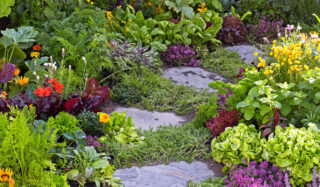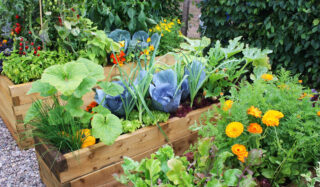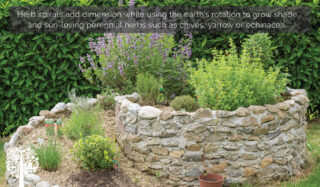What is an Edimental Garden?
Ornamental perennials are those long-lasting plants that bring colour and glamour to the landscape. Many are edible and are finding new purposes in the edimental garden.

In his book, Around the World in 80 Plants: An Edible Perennial Vegetable Adventure for Temperate Climates, author Stephen Barstow coined the word edimental. Fusing the aesthetic characteristics of the garden scape with the practicality of growing nutrient-rich foods, these plants are both familiar and surprising.
Lavender, for instance, is often grown for its landscape qualities and commonly added to salads and other dishes as a flavouring. The common Hosta plant, known for its attractive leaves and dominance in shady gardens, is called goboshi in Japan and is often added to soups and stews.
The edimental garden is unique because it creates a holistic experience that turns the entire landscape into an edible harvest.
Benefits Of A Perennial Edimental Garden
Perennial edimentals, unlike annual vegetables, are better able to withstand climate change weather events such as heat waves, drought, cold and heavy rainfall.

Their ornamental characteristics often include blooms, so pollinators like bees, hummingbirds, and insects love them. Therefore, these plants support biodiversity year after year.
The annual vegetable patch will supply harvests from late spring to fall but needs to be re-seeded yearly. Edimentals are cultivated with the idea that they will return annually.
Creating An Edimental Garden
An edimental garden, like a food forest, is all about layers on a small scale. Trees and fruit-bearing shrubs like blueberry or raspberry create a natural canopy for edible shade plants such as Hosta or fiddlehead ferns. Sun-loving edibles like Shasta daisies or self-seeding sunflowers live outside the shade zones bordering the garden’s sunny edges.
Herb spirals add dimension while using the earth’s rotation to grow shade and sun-loving perennial herbs such as chives, yarrow or echinacea. Edimental gardens are great for the urban landscape and can often be planted in containers on urban patios or balconies, adding decorative appeal alongside food security.

The key is to choose the right plant for your climate. A passion fruit vine, for example, produces exotic-looking flowers and tasty fruit but won’t withstand the deep freeze of winter. And remember, perennials get bigger every year, so when planting, give them space to spread out.
Think Natural
Unlike the ornamental garden, remember that what you put into the soil, you are also putting into yourself. Replacing pesticides and fertilizers with compost and natural soil augmentations such as coffee grounds or kitchen scraps will create healthy plants and a healthy you.
Research
The list of edimental perennials is long and includes garden favourites such as the popular daylily, whose blossoms (like squash flowers) can be turned into fritters or stuffed with rice and other vegetables. Before planting edimentals, research which perennials are edible and can be grown in your region.
The David Suzuki Foundation has a section dedicated to edible perennials, and there are great articles to be found on the Permaculture Research Institute site.
Just imagine a garden full of beautiful blooms and every single one of the plants harvested for its edible goodness. In an era when foraging for food and community-based food forests are increasingly popular, edimentals are another way to create personal food security year after year.




